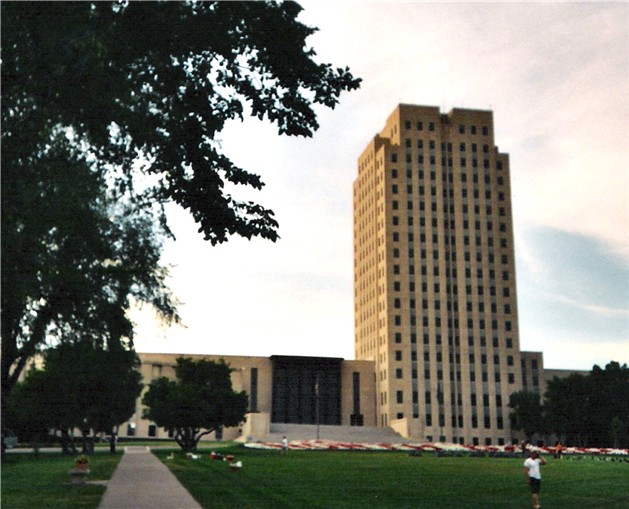North Dakota voters will decide in Nov. 2026 whether or not to change term limits for state legislators.
Under the amendment, legislators could serve four complete four-year terms (about 16 years) in the state legislature regardless of chamber. Partial terms would not count toward the limit. It would also repeal the provision of the 2022 initiative that prohibited the legislature from amending term limitations.
In 2022, voters approved Constitutional Measure 1 with 63.43% of voters in favor. The initiative, sponsored by State Rep. Jared Hendrix (R-10) and backed by the organization U.S. Term Limits, created term limits for the governor and state legislators.
It limited state legislators to a maximum of eight years in each chamber—eight years in the state House and eight years in the state Senate—for a total of up to 16 years in the legislature. It also prohibited legislators from serving the remainder of a term if doing so would result in more than eight years of service in that chamber. The initiative applied to individuals elected after approval of the amendment. The measure also provided that term limitations could only be amended by initiative petition and not by the state legislature.
Hendrix said he would seek an opinion from the attorney general on whether or not the amendment can be placed on the ballot given the 2022 initiative's restriction on legislative amendments to term limits.
The amendment was sponsored by Sen. Mike Dwyer (R-47). It was approved in the Senate by a vote of 24-23. Of the five Senate Democrats, two voted in favor, and three voted against. Of the 42 Senate Republicans, 22 voted in favor, and 20 voted against. The amendment failed to pass the House in a vote of 46-43 on April 1, but was reconsidered on April 2 and passed by a vote of 53-39 after two Democrats and five Republicans changed their vote. Of the 11 House Democrats, two voted in favor, eight voted against, and one was absent. Of the 83 House Republicans, 51 voted in favor, 33 voted against, and one was absent.
Rep. Lori VanWinkle (R-3), who voted against the amendment, said, "I don’t know how we’re going to justify overrunning the will of the people. The power reserved to changing term limits is reserved to the initiative process.”
Rep. Steve Vetter (R-18), who voted against the amendment, said, “The senators don’t want to become representatives. That’s really what this bill is because that’s all it does.”
Senate Majority Leader David Hogue (R-38) said that the amendment “just says it’s 16 years — doesn’t matter whether you’re in one chamber or the other — and it’s a full 16 years, so I thought it had some fidelity to the measure that the people passed, although it’s not exactly what they passed."
North Dakota is one of 16 states with term limits for state legislators. Prior to 2022, North Dakota legislators served four-year terms with no limit on the number of terms that could be served.
Legislative term limits can be either lifetime or consecutive.
North Dakota is one of six states with lifetime term limits. The other states are California, Michigan, Missouri, Nevada, and Oklahoma. In these states, once a legislator has served the maximum allowable number of terms in a particular legislative chamber, they may never again run for or hold office in that particular chamber.
In the ten states where the limits are consecutive, once a state legislator has served the maximum number of terms in office, he or she, if eligible, can run for office for the state's other legislative chamber, or leave the legislature. These states are Arizona, Arkansas, Colorado, Florida, Louisiana, Maine, Montana, Nebraska, Ohio, and South Dakota. After a period of time no longer in office in a particular legislative chamber, however, the legislator is allowed to run again for office in that legislative chamber. The period of time that a legislator must be out of office before being able to run again is usually two years.
In the United States, of the total 7,386 state legislative seats, 2,069 (28.0%) are term-limited.
Additional reading:


